Table of Contents
We explain what hominins are, their origin and evolution. In addition, we explore their characteristics, and the types that existed.
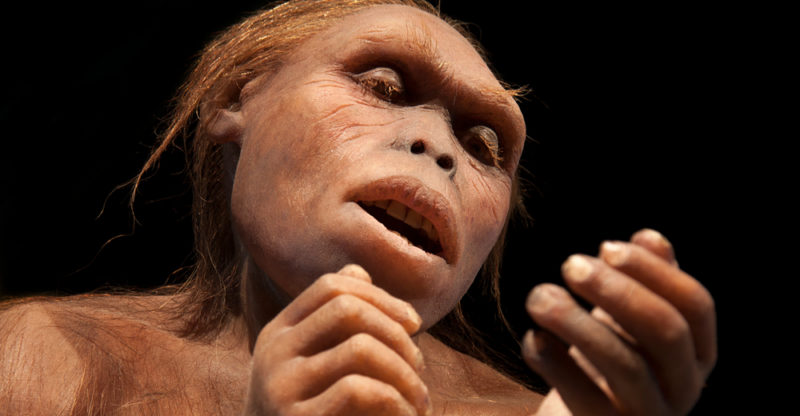
What are hominins?
The term "hominins" (also known as “hominini”) refers to the different species of the genus Homo that make up human evolution. Hominins include Homo erectus, Homo sapiens and Homo neanderthalensis, among other species. The only surviving hominin species is Homo sapiens sapiens, i.e. modern humans.
Hominins belong to the biological family of hominids, a term with which they are often confused. Hominids constitute the biological family of bipedal primates, encompassing chimpanzees, bonobos, orangutans, and humans, among other animal species. Hominins are a category within hominids.
- See also: Human origin
Origin of hominins
Though which should be considered the first hominin is debated, it is widely accepted that hominins would have appeared on Earth during the Miocene Epoch (historical period dating 23 to 5 million years).
In the late Miocene and early Pliocene (approximately 12 to 8 million years ago), two major groups of hominids existed: dryopithecines, adapted to forest habitats, and ramapithecines, adapted to open field habitats.
Ramapithecines exhibited hominid traits, and survived until the Pliocene Epoch (between 10 and 3 million years ago). They are thought to have been the origin of Australopithecus, the earliest ancestor of hominins. Their fossil remains trace back their existence between 4 and 2 million years ago.
Differences with hominids
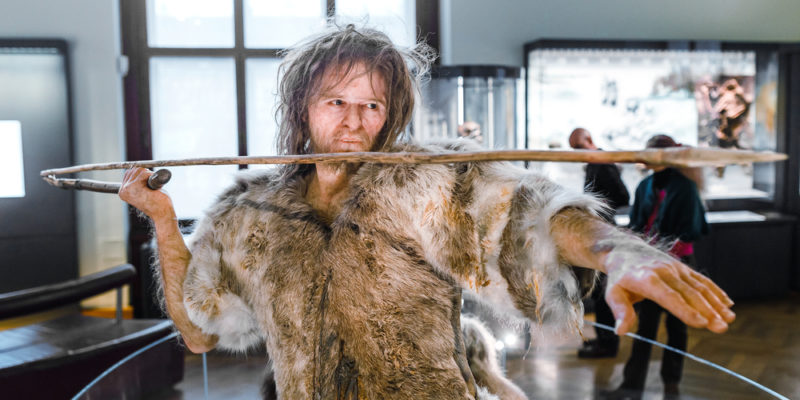
While these terms are often used synonymously, they have different meanings. The term "hominid" refers to the family of bipedal primates, which includes orangutans, gorillas, chimpanzees and humans, among others.
On the other hand, the concept "hominin" only encompasses the species of the genus Homo, which is part of the human evolutionary process.
Evolution of hominins
Charles Darwin postulated the theory of evolution in his book “On The Origin of Species”, published in 1859. This theory holds that certain individuals within each species exhibit mutations in certain biological traits that may be selected by environmental conditions, favoring the survival of these individuals, which will have a better chance of transmitting the mutations to their descendants.
Contemporary scientists across various disciplines agree that all species are the result of the accumulation of successive changes over vast spans of time.
Human evolution was not a linear process. Archaeological evidence suggests that some hominin species coexisted, some of which became extinct while others evolved. Nevertheless, a timeline can be established outlining the major evolutionary leaps of the genus Homo that led to the emergence of modern humans:
- Australopithecus
- Homo habilis
- Homo erectus
- Homo ergaster (subspecies)
- Homo heidelbergensis (subspecies)
- Homo rodhesiensis (subspecies)
- Homo sapiens
- Neanderthal Man
- Homo sapiens sapiens (subspecies)
- See also: Human evolution
Australopithecus afarensis
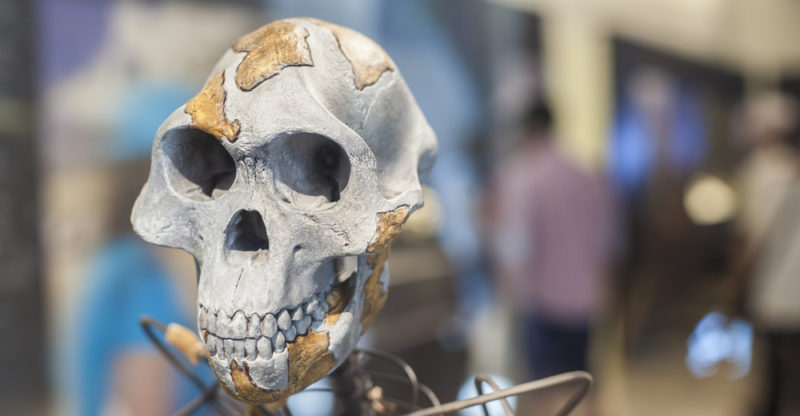
Australopithecus is considered to be the starting point of evolution towards our species. It is a group of African bipedal hominins that originated 4 million years ago. They were bipedal primates, lived in savanna habitats and were vegetarians. Their cranial capacity averaged around 450 cc. They walked upright, which gave them a number of advantages like freeing their hands for grasping, as well as a central visual field.
This species used stones as rudimentary tools for cracking bones or shells to extract meat or marrow. The best-preserved specimen of this species, nicknamed "Lucy", was found in 1974 in Ethiopia.
From them, two different and parallel evolutionary lineages evolved. On the one hand, Paranthropus, characterized by a greater robustness and hard vegetable diet. On the other hand, Homo, physically weaker but with a larger brain. These species coexisted for about a million years, until the genus Homo notably evolved into Homo habilis.
- See also: Australopithecus
Homo habilis
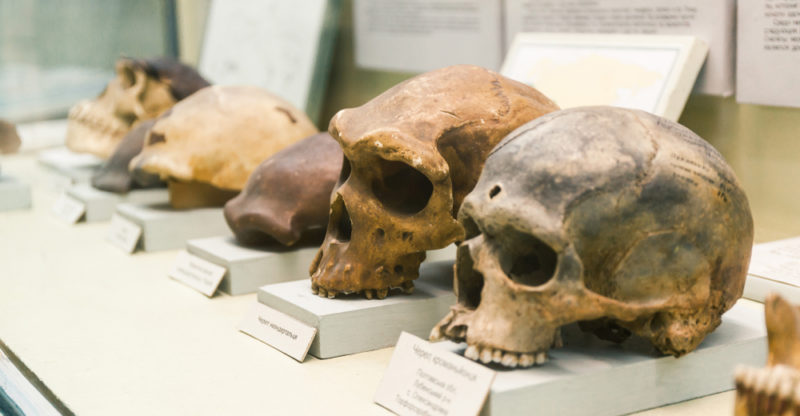
Homo habilis ("handy man") was a hominin that lived during the Early to Mid-Pleistocene, around 2.6 million years ago.
The name makes reference to the abundance of lithic (stone) tools found alongside their fossils, which suggests that they would have mastered the art of crafting stone tools. They reached a height of 4 ft 6 in (1.40 m), and had a cranial capacity of up to 700 cc. They developed speech, manufactured tools, and built temporary shelters.
Homo erectus
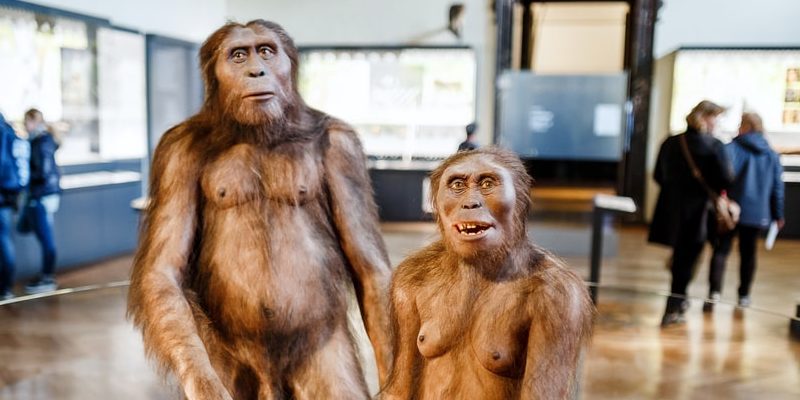
Homo erectus migrated through Africa, Europe, Asia and Oceania starting around 1.5 million years ago, and existed until about 500,000 years ago. Their specimens reached a height of 5 ft 24 in (1.60 m) tall, and their cranial capacity reached 1000 cc. They hunted small animals, lived in camps and caves, and learned to control fire.
Within the Homo erectus classification are included other hominin groups known by other names, such as Homo ergaster. Their extinction in certain regions is linked with the Toba Catastrophe theory from the Early to Middle Pleistocene (arguably the eruption of the Toba supervolcano), and with the evolution into Homo sapiens.
- See also: Homo erectus
Homo ergaster
Homo ergaster originated in Africa between 1.9 and 1.4 million years ago. They exhibited a larger cranial capacity (around 850 cc) than Homo habilis, and their size was similar to that of modern humans.
Whether it should be considered a subspecies of Homo erectus or a species of its own is an ongoing dispute among experts. They might have had some form of articulated speech, though there is no evidence of any complex symbolic thought. This species was the first to migrate from Africa to Asia and parts of Europe.
Homo sapiens
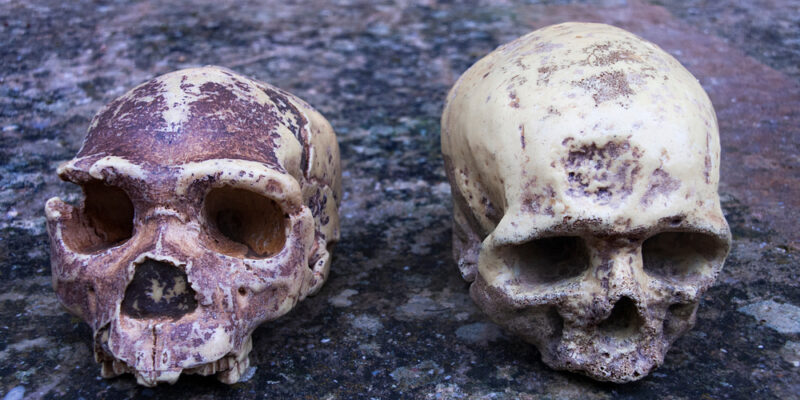
Homo sapiens is the species that evolved from the various forms of Homo erectus. The evolutionary transition began 500,000 years ago, but it was not until 200,000 years ago that Homo sapiens emerged as a clearly distinct species.
The variety of Homo sapiens throughout this transition is referred to as archaic Homo sapiens. Homo antecessor and Homo heidelbergensis are widely accepted to fall under this category, as they are ancestral to the Homo sapiens species that led to modern humans.
The cranial capacity of Homo sapiens reached 1,500 cc, and researchers believe that 200,000 years ago, their intellectual potential was the same as modern humans. Homo sapiens manufactured more elaborate tools than their ancestors, made more complex use of language, and developed a symbolic intelligence, as is evidenced in their burial practices.
- See also: Homo sapiens
Homo neanderthalensis
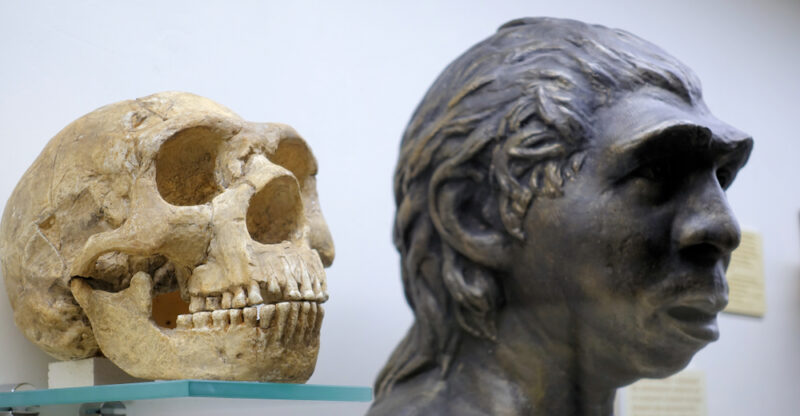
"Neanderthal Man" was a species that coexisted with Homo sapiens and Homo sapiens sapiens for thousands of years. They inhabited Europe, the Near and Middle East, and Central Asia approximately 230,000 to 30,000 years ago. They were hunters and lived in larger groups.
Upon discovery of the earliest fossil remains of Homo neanderthalensis, scientists believed them to be a distinct genus Homo. Nowadays, however, they are classified as a subspecies within the genus Homo sapiens.
The reasons for their extinction remains a subject of debate, but most studies point to the numerical and adaptive superiority of Homo sapiens sapiens. Nonetheless, the coexistence between the two groups led to biological and cultural exchanges, resulting in cases of hybridization between species. This means that a portion of the Neanderthal genome still survives today in a certain percentage of the human population.
Homo sapiens sapiens

Homo sapiens sapiens is regarded as the subspecies of Homo sapiens that are modern humans. Homo sapiens sapiens populated Africa, Asia, Europe, Oceania, and the Americas.
The oldest fossil remains date from 100,000 years ago. They mastered group hunting techniques for large animals. They developed symbolic thought, practiced religious rites, and represented reality in paintings and sculptures.
Explore next:
Was this information useful to you?
Yes NoThank you for visiting us :)